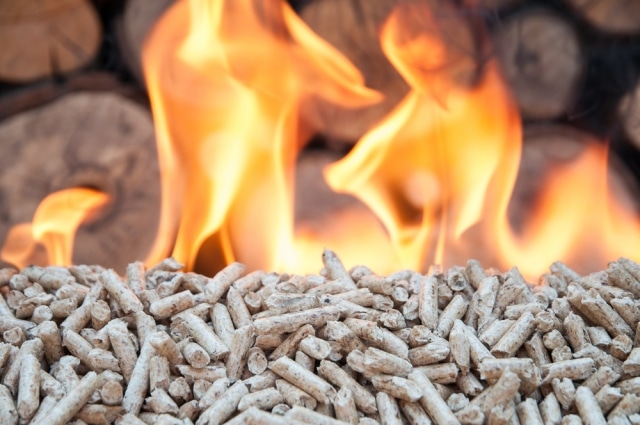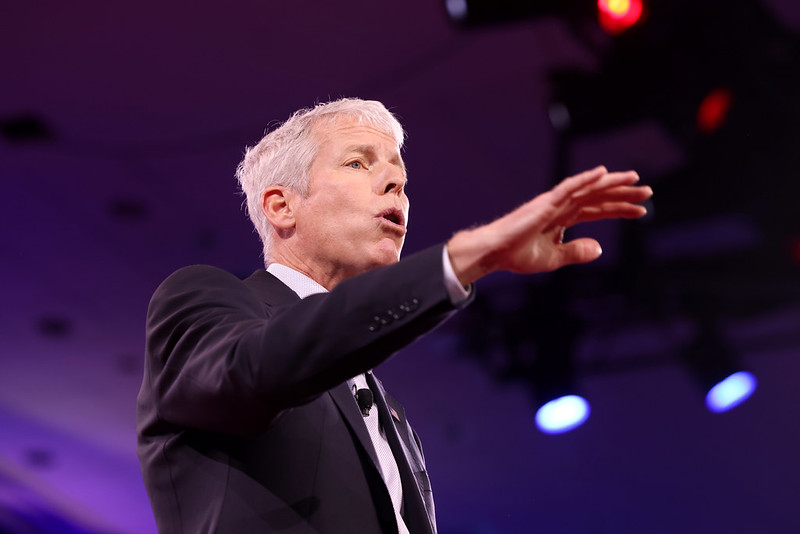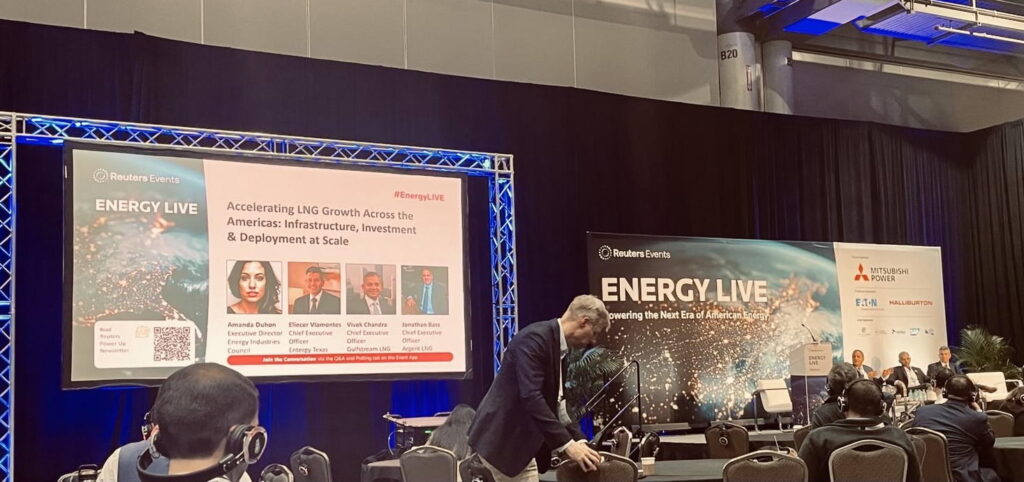The EPA’s Clean Power Plan is the foundation of President Obama’s climate strategy. The plan, which is to be finalized later this year, sets state-by-state targets for reducing emissions from existing power plants, especially coal-fired power plants, which will be essential to meeting the commitments made in the climate deal President Obama struck with China late last year.
It’s no secret that, like any law or regulation ground out in our nation’s capital, the Clean Power Plan is far from perfect. For instance, we’ve got to replace all that coal-fired energy somehow, but the plan sets renewable energy targets that are, in many cases, less ambitious than the targets states have set for themselves.
Still, you’d think that the EPA would, at the very least, be promoting only those replacements for coal as a fuel source that are actually going to achieve the desired emissions reductions. But you’d be wrong.
As it stands now, the Clean Power Plan would allow states to account for bioenergy — the burning of biomass, mostly wood and other woody material harvested from forests, for electricity generation — as if it were a zero-carbon energy source.
Any honest accounting, however, shows that bioenergy creates more carbon emissions than coal, the very fuel it’s meant to replace, and should not be promoted alongside renewables like wind and solar as solutions to the climate crisis.
Little attention has been paid to the fact that the EPA is going to let a fuel dirtier than coal be used as a compliance mechanism for a plan designed to phase out the dirtiest of fuels. But as the summer 2015 deadline for the final rule approaches, the issue is starting to attract some notice.
Markey and Warren Call For Moratorium on Bioenergy
Earlier this month, Massachusetts Senators Ed Markey and Elizabeth Warren sent a letter to the EPA calling for a moratorium on states being permitted to replace coal with bioenergy as a means of complying with mandated emissions reductions.
“As strong supporters of the Environmental Protection Agency’s Clean Power Plan,” Markey and Warren wrote in the letter, “we write to express our concern that any decision by EPA to treat bioenergy as having zero emissions under the Plan could undermine the Plan’s intended purpose of reducing power sector carbon emissions.”
Markey and Warren want the EPA to complete its scientific review of bioenergy’s “climate consequences” before allowing it to be used by states as a zero-carbon fuel.
According to the text of the June 2014 Clean Power Plan Proposed Rule, the EPA is satisfied by the preliminary results of its scientific review and willing to move forward with bioenergy as a compliance mechanism
“Because of the positive attributes of certain biomass-derived fuels, the EPA also recognizes that biomass-derived fuels can play an important role in CO2 emission reduction strategies. We anticipate that states likely will consider biomass-derived fuels in energy production as a way to mitigate the CO 2 emissions attributed to the energy sector and include them as part of their plans to meet the emission reduction requirements of this rule, and we think it is important to define a clear path for states to do so.”
The EPA does note that “the contribution of biomass-derived fuels to atmospheric CO2 is sensitive to the type of biomass feedstock used, and the way in which the feedstock is grown, processed, and ultimately combusted as a fuel for energy production.”
So the EPA isn’t ignoring the complexities of bioenergy carbon accounting. In fact, the agency is proposing to lay out a regulatory framework that ensures its carbon neutrality.
But according to environmentalists who have crunched the numbers themselves, there is no way to achieve significant emissions reductions within the next decade if bioenergy is a key fuel source — and if we don’t kick our carbon habit in the next 10 years, we may have utterly failed to avert runaway global warming.
“It takes a second to fell a tree, and a decade to grow it back. It’s as simple as that,” Dr. Mary Booth, director of the Partnership for Policy Integrity, tells DeSmog. “Anything that changes the source and sink relationship of forests is going to be a problem. Trees are taking carbon out of the air and turning it into new forest biomass. That’s a sink for carbon. Burning trees is a source for carbon. Removing a sink, from the atmosphere’s point of view, is no different from increasing a source.”
Booth says that treating bioenergy as clean energy under the Clean Power Plan provides incentive for companies to convert more coal plants to burn wood, or to build standalone facilities specifically intended to burn wood.
Dr. Booth’s fear is that bioenergy will then become more entrenched and more difficult to phase out in the future. Not to mention we’ll be chopping down forests and creating more emissions all along the way.
A proper accounting of emissions from burning wood for energy is no simple task, Booth explains.
For one thing, you have to take into consideration the fact that much of the wood is the leftovers from logging – the tops and branches of trees. If left on the forest floor where they fell, those leftovers would decompose and release their stored carbon all the same, just a lot more slowly than they release their carbon when burned.
For another thing, forests grow back and suck carbon out of the air to do so. That’s the central argument made by proponents of bioenergy as a zero-carbon fuel source: We chop a tree down, release its carbon by burning it, and a new tree grows in its place, sucking that carbon back out of the atmosphere. But even if there were a mandate to systematically replant all the trees that, in whole or in part, end up getting burned for energy — which there isn’t — accounting for the emissions of bioenergy is not nearly as simple as that.
As the EPA itself acknowledges, not all bioenergy is equal. Different types of trees grow at different rates, and how quickly logging leftovers decompose depends on the type of wood, the atmospheric conditions, and the level of moisture in the forest, among many other factors.
The proposed framework released by the EPA last November acknowledges that counting greenhouse gas emissions from bioenergy must consider all of the impacts biomass harvesting has on ecosystems, including how long it takes to regrow trees harvested for fuel. The framework even admits that biomass power plants can be net producers of CO2 emissions for decades.
However, in a memo written by the EPA’s Acting Assistant Administrator for Air and Radiation, Janet McCabe, and released with the accounting framework, the EPA is proposing to exempt whole classes of biomass fuels from regulation despite its own analysis. According to a statement by the Partnership for Policy Integrity’s Booth, the memo indicates that “waste-derived” biomass, some forest-derived “industrial products” and “sustainably harvested” forest wood might all be exempted.
“While certain biomass materials, such as wastes from the pulp and paper industry, are less likely to increase emissions when burned for fuel, there is no basis for assuming ‘sustainably’ harvested forest materials have zero carbon emissions,” Booth says in the statement. “Indeed, ‘sustainably’ harvested forests are being cut and burned around the planet, moving millions of tons of carbon from trees into the atmosphere each year.”
Booth has done the careful modeling and can demonstrate that, no matter how favorably you set the parameters, you cannot achieve meaningful emissions reductions within the next decade by promoting bioenergy.
Say you have a relatively small, 10-megawatt plant; 90% of biomass in nearby timber acreage is cut, meaning a lot of residue is generated, so all of your fuel is leftovers; and say you set a really fast decomposition rate, minimizing the difference between leaving those leftovers on the forest floor and burning them — burning wood for electricity still takes at least 10-12 years before it reaches emissions parity with coal.
Those are 10-12 years we don’t have to wait for emissions savings.
The reason there’s so much more CO2 coming out of the stack per megawatt-hour with bioenergy than there is with coal is the efficiency of the plants, Booth tells DeSmog. With biomass, power plants are burning wet fuel, making it way less efficient than coal. So they’ve got to show a benefit somewhere else. In other words, they’ve got to show that the trees grow back so fast it doesn’t matter that a forest was cut down.
“But forests don’t grow back that fast,” Booth says. “Even in Southern pine plantation forests, where they water and fertilize and do everything they can to maximize growth, you still don’t see a carbon benefit for decades.”
Like Senators Markey and Warren, Booth wants the EPA to change the way bioenergy is accounted for under the Clean Power Plan — and this is a fight she has won before. When the EPA first started the process of regulating CO2 as a pollutant under the Clean Air Act in 2012, the agency exempted biomass, effectively saying power plants could burn as much wood as they want and the EPA would treat it as zero emissions. The Partnership for Policy Integrity joined with several other groups to sue the EPA, and won.
“Then the EPA turns around and comes out with the Clean Power Plan, and they did the same thing,” Booth says. “So here we are again.”
Image Credit: tchara / Shutterstock.com
Subscribe to our newsletter
Stay up to date with DeSmog news and alerts






